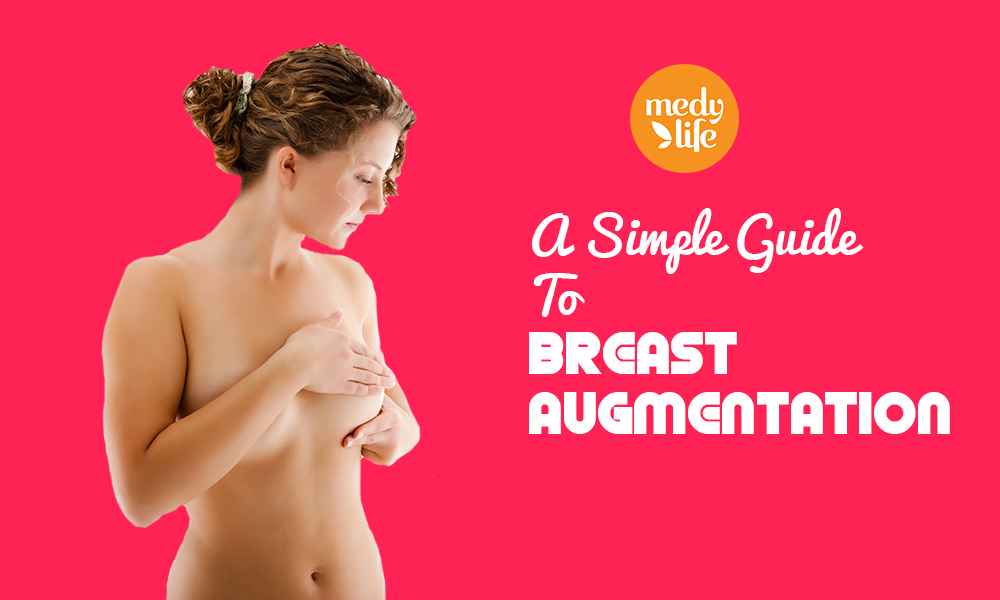
A Simple Guide To Breast Augmentation
13-08-2018 | Posted By: Admin | 1664 View(s)
When you want to have the shape or size of your breasts altered, it’s possible to do so with a plastic surgery procedure known as breast augmentation, which either involves the usage of a fat transfer or breast implants. Before you schedule an appointment with your plastic surgeon of choice, you will want to be aware of all of the different incision sites that are available with a breast augmentation. Although each incision site offers similar results, you may want to select one that isn’t as noticeable or doesn’t lead to too much scarring.
What Is a Breast Augmentation?
Breast augmentation is a type of procedure that is designed to help with the restoration of volume that you have lost within your breasts, which typically occurs with a substantial weight loss or a pregnancy. This type of surgery can also be used to obtain a more rounded shape for your breasts or as a means of improving the breast asymmetry. Although it’s possible to have fat transferred from one area of your body to your breasts as a means of increasing their size, this is the less common form of breast augmentation that involves the provision of liposuction. For breast implants, there are several different types that you will want to be aware of.
Different Types of Breast Implants
If you believe that you would prefer breast implants as opposed to a fat transfer, there are a variety of different types that you will first want to consider to ensure that you are provided with implants that suit your needs. The most common types of implants include saline and silicone implants. Saline implants are filled with salt water that has been sterilized. One of the primary benefits of this type of implant is that a collapse of the implant isn’t too problematic, which is because the saline from the implant is absorbed directly into your body before being expelled from it. These implants all have a standard shape and feel to them. It’s also possible to select a structured implant that’s filled with a saline solution. These particular implants include a small structure within that is designed to make the implants feel more natural.
As for silicone implants, these are comprised of a type of silicone gel that is designed to feel similar to standard breast tissue. Although saline implants can be used by women of 18 years of age or older, silicone implants are recommended for women of 22 years of age or older. You may also want to consider gummy bear implants, which consist of a thick gel that is harder than the gel found in standard silicone implants. The thickness of this gel means that the implant won’t lose its shape if the shell breaks. If none of these implant types sounds good to you, you can also ask your surgeon about the round, smooth, or textured implants, each of which offers something different that you may prefer over the others.
Different Incision Sites Used During a Breast Augmentation
There are several different incision sites that could be used during a breast augmentation. Although the specific site used during your procedure will largely depend on how large the implant is as well as the type of implant that is being used, you will still have a say over which incision site you prefer. The three primary incision options used with a breast augmentation include in your armpit, on the lower portion of your breast, and around the edge of your areola. It’s also possible for the incision to be made at your belly button. However, this approach can be more complicated to use and has additional risks when compared to the other incision sites.
The incisions all have similar sizes to them. If you want the smallest incision, consider the option that places the incision at the edge of your areola. The most easily concealed incisions are the ones that occur in your armpit. Each of the three main incision sites come with minimal amounts of scarring, which means that you likely won’t need additional treatment to reduce the scarring that you’re experiencing following the treatment. Aside from the administration of anaesthesia before the incisions are made, the only other aspects of the procedure that you should be aware of include the placement of the implants under your muscle or above the muscle and the closing of the incisions. Both the under the muscle and over the muscle approaches are known to be effective methods. When the incisions have been properly closed, you will be able to start your recovery.
Risks Attributed to Breast Augmentation Procedures
With breast augmentation, the main risk of obtaining such a procedure is that you won’t be happy with how your breasts look following the treatment. This is rare but can be readily corrected with another treatment. It’s possible for there to be tight scarring around the incisions after treatment along with leakage or complete rupture of the implant. Bleeding and swelling are common effects of a breast augmentation that are only problematic when they don’t go away after a couple of weeks. If ever you experience any complication that you are worried about, make sure to contact your plastic surgeon immediately.
Recovery and Results
Recovery from a breast augmentation usually takes a few weeks, which is particularly true of the swelling and bruising that occurs around the incisions. You shouldn’t resume rigorous exercise or activity for several months and will want to make sure to follow all of the guidelines provided to you by your surgeon. Results of the augmentation will take several weeks to fully appreciate given the fact that you need to wait for the swelling to go away and for the skin to stretch properly.
Dr Donald Roland is a plastic surgeon who specialises in all kinds of cosmetic enhancement surgery. His primary goal is to provide patients with exemplary experiences from the first consultation to the last treatment session. He is board certified and obtained his medical degree from the NYU School of Medicine.



